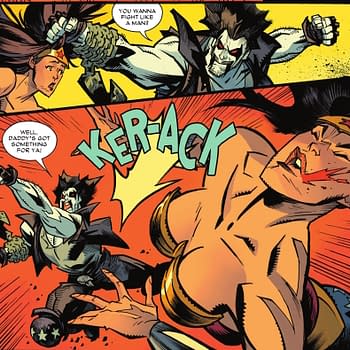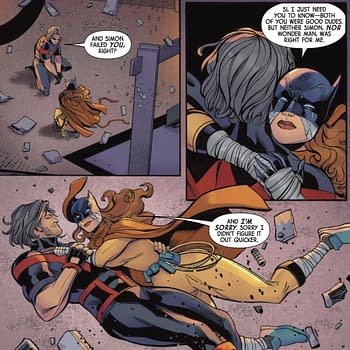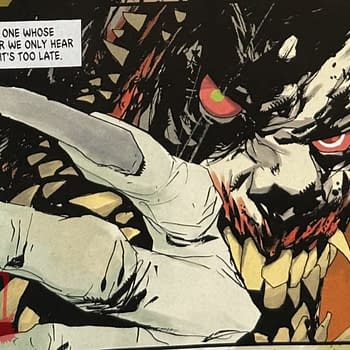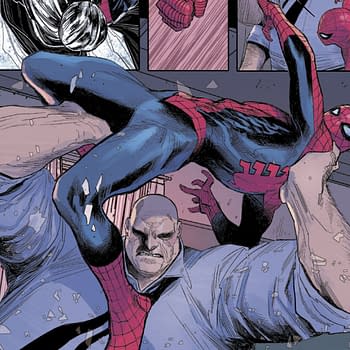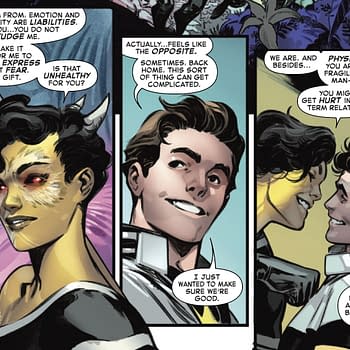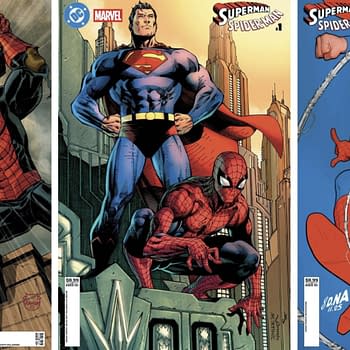Posted in: Comics | Tagged:
Sexualized Or Sexy? Marguerite Bennett, Kris Anka, Jen Bartel, Babs Tarr, Kevin Wada And Jake Wyatt Talk At HeroesCon 2016
Jonathan Rich writes for BleedingCool.
Panelists at HeroesCon 2016's 'Sexy or Sexualized' panel did not resolve the hot button issue of how gender roles and stereotypes often dominate the marketplace and attention span of its fandom, but the professionals gathered to discuss the issue certainly gave the topic some food for thought during their lively and sometimes humorous discussion.
Moderated by DC Bombshells writer Marguerite Bennett, the panel comprised of artists Kris Anka (Captain Marvel), Jen Bartel (Jem and the Holograms), Babs Tarr (Batgirl), Kevin Wada (She Hulk), and Jake Wyatt (Necropolis) made time for some laughs in addition to tackling the serious subject of how gender roles are defined, reinforced, and sometimes subverted in popular culture.
"I just wanted to be the voice of the straight, white male up here," joked Wyatt explaining his last minute addition to the Heroes Con panel. "You just never hear enough about this from the perspective of my people."
"The topic is so enormous, you could dedicate an academic career to studying it," explained Bennett. "So much of this is up for debate and there are so many valid and often unexpressed perspectives."
When posed the question of where the line should be drawn in terms of overt sexualization of comic book characters, Babs Tarr said for her it was instinctive.
"I think it depends on the character and the story," Tarr said. "I'm a girl and I know when something crosses the line. I remember being little and going into a comic shop and seeing some images which made me think, 'Oh no, this is not for me.'"
Anka said his perspective was to simply work with conventional wisdom.
"I just don't do whatever my editor tells me not to do," he explained. "The line never really comes up because we're not going anywhere near it."
Bartel said working to update a licensed property from the 80s for modern tastes often involved updating the gender roles to reflect more modern tastes and attitudes.
"For me, it's about perspective and power; who has the agency and I try to make the women in my stories have more control over their situations," Bartel said. "Also, many of the original characters I am working with were literally figures based upon the same plastic molds and now we try to diversify in terms of sexuality and gender."
Wyatt said he hoped his images were carefully chosen in regards to the connotations they shared.
"I draw the way I do for a reason," he said. "My guideline is there because I want things to be presented in a certain way… when I was eight years old I was drawing Storm from the X-Men cartoon and my mother pulled me aside to tell me 'that looks like a man with fake boobs.' It all started with my mom just lighting me up all the time."
"I try to think about all the micro instances where you have to deprogram all of the 'male gaze' that art in advertising might indicate," contributed Kevin Wadu. "If you think about what you are doing, the audience you gain helps you grow and makes you aware of how brainwashed we all can be by things. Then you get 'awoke.'"
Tarr agreed.
"I feel creating something that can become part of the culture is an important responsibility and totally changed how I drew," she said of her experience working to visually redefine the iconic character of Batgirl. "With Barbara, I would try to pose her in respectful ways with no crazy crotch shots or bending over in ridiculous ways to find clues. It's all a reflection of the readership wanting to be respectful and asking the creators to do the same."
"The only note I got back from Marvel about appearances in Captain Marvel was to make her buffer," Anka admitted. "Now six issues in she's gotten twice as big and I can't stop. We wanted her to immediately have a look that was physically imposing and for her to stand out among the superheroes. This is her job and out of the four women in my series they all have four different body types because they do four different things in the story. Being 'sexy' means different things to different people, but it has allowed me to appeal to a broader range of readers."
While the artists all agreed on the need to be cognizant regarding the implications of their images, they also said the companies publishing their work have a great deal to do with how diversity and stereotypes are reinforced or even challenged within the marketplace, especially in light of the controversy some images create within pop culture.
"Sometimes it's the people higher up who need to make smarter decisions," Tarr interjected. "For something to be published, it has to go through a lot of hands and for everyone to say 'Yeah, I'm okay with this.'"
"Comics are a team effort," Bartel added with Wyatt agreeing. "Exactly, everything we do is part of a larger ecosystem," he said.
Moderator Bennett added that as a writer working with a property such as Bombshells, sometimes trying to address the issue of sex in comics was literally working against the societal norms prevalent throughout history in addition to appropriately incorporating the modern popularity of cosplay.
"With Bombshells, all the character's backstories were retro-engineered and a lot of it was the struggle with the nature of pinup images," Bennett said. "It was trying to balance the historical period with stories which were powerful and empowering and the amount of cosplay that existed before the series was impressive. We were careful about those things and I think that's what made the series even more popular."
Jonathan Rich is a freelance journalist, high school educator, and self-professed comic book nerd working in the Blue Ridge Mountains of western North Carolina. He writes about entertainment and pop culture for various print and web publications, including bleedingcool.com.









